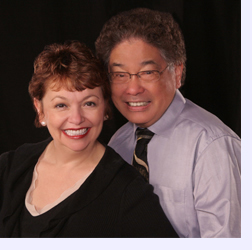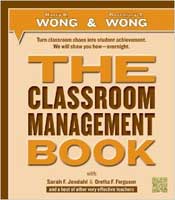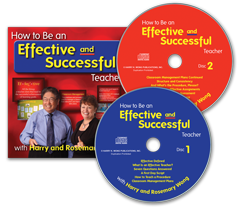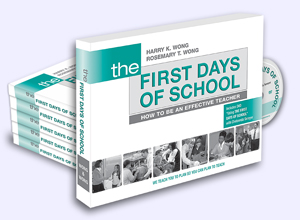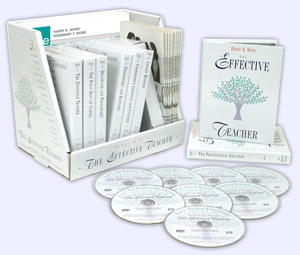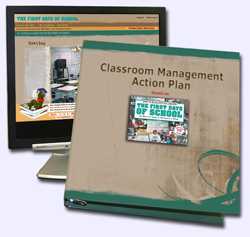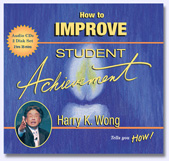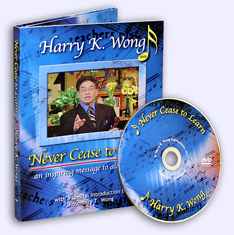|
 |

Special to the Gazette
February 2012
The Highest Rated School in New York City
SISCL is a regular, neighborhood, zoned urban school. It is not a magnet, charter, or private school. It is a school filled with a diversity of English language learners (ELL) and 20% special needs students. It also qualifies for Title 1 funds and is 69.5% poverty. But you would never know this as they are into academics and civic leadership and not into telling people about their demographics or holding out their hands looking for money to buy a quick fix program. SISCL is into its students and teachers. The reason they are the highest rated school in New York city is its teachers teach very effectively. That’s the basis for its student learning and achievement. Free Access to the Principal At many schools, there is a swinging door or passageway at the end of the front counter in the attendance office that leads to the secretaries behind the counter and finally the principal’s office. One teacher remarked, “At my last school, there was a yellow line on the floor and no one was allowed to cross the yellow line unless you had an appointment with the principal. Here at SISCL we have free access to the principal.” There is trust!
Click here to see a synopsis of the proposal Rose submitted, “This Is What We Believe and Will Implement.” Rose’s management style is collaborative. As she says, “2-3 heads are better than one.” She’s very approachable. Her leadership style is not of the “Carrot and Stick” method. She is not the old system of command and control over people. She practices “Connect and Collaborate” to generate power through people. The heart and success of SISCL is collaboration. Rose has created this air of collaboration for teacher growth and development–all from trust. She does not own a Blackberry phone because she says, “I do not want this buzzing going on when I am listening to people, especially the kids. The kids have to see you, not you with a cell phone to your ear.” Our Visit to SISCL We dropped in at SISCL in November 2011 and were astonished at what we saw. Bear in mind, we’ve seen hundreds of schools through the years, but nothing like this. There was a glow everywhere—on the teachers’ faces, in the children’s eyes, in the bulletin boards in the hallways displaying student work, in the clean stairwells, from the sun as it poured into the classrooms’ clean windows. SISCL was a place that magically captured your spirit and wouldn’t let go! During our visit we invited the teachers to share their work with us. In all our decades of dealing with teachers and schools, we have never, never had the collaboration and cooperation from teachers as has been shown by the SISCL staff. We were overwhelmed with their professionalism: their work, their attitude, and their community of sharing. The staff were breathing and living their school’s mission of leadership every moment of their day. Typical of the collaborative attitude is what kindergarten teacher, Loreta Andersen says, “I am very glad to be part of a team of outstanding teachers. They are exceptional and I am humbled to be working with them. The entire team has so much to offer and I am glad to be a part of it.” The Goal of SISCL The goal of SISCL is to develop students who are as committed to the public good through personal achievement.
At this time in our history, as we look to the future of our communities, our nation, our Earth, it is evident and essential that our schools help students develop into highly trained, highly motivated, and highly committed individuals and citizens. What SISCL aspires to do is stated in their mission statement. While most school mission statements are generic and tired platitudinal expressions, SISCL means and carries out what they say: The Staten Island School of Civic Leadership The Foundation Is Set When Rose started SISCL she asked all of her teachers to read two books: our book, The First Days of School, and Stephen Covey’s book, The 7 Habits of Highly Effective People. The First Days of School would cover the organizational and management procedures of a classroom and The 7 Habits of Highly Effective People would encompass the civic leadership attitude and expectations of the students. The 7 Habits would be put in place using the “The Leader in Me” model based on Covey’s work. Learn more about it at http://www.theleaderinme.org. Procedures Provide the Foundation There are procedures that are used consistently at certain grade levels and procedures that are reserved for individual classrooms. One of the K-2 procedures is Greeter Leader.
Kimberly Colonna’s classroom is shown in the upper picture. She teaches the greeter to say "Good Morning, Ava" (or whomever they are greeting). In return that student will reply with "Good Morning, Bryan." She also teaches them that it is extremely important to make eye contact when speaking to each other. It shows their interest for one other and instills the belief on the children that if we show respect, we will receive respect in return. This procedure is carried out consistently every morning in every K-2 classroom at SISCL as shown by Anne DeVito’s classroom in the other greeter picture.
The children have learned the procedure that when she wears her "Conference Hat," she is working with a student that needs her attention at that time. This visual tells the class to stay on task and when it is their turn they will get the same respect. This procedure prevents students who want to jump up and get her attention; when they see the hat they go right back to work. Anne says, “This is a small, but powerful management procedure.” This is a teacher preference management tool that works well for her with her students. Begin With the End in Mind
Sharing Out is a major purpose of SISCL as they expect their
Kindergarten teacher, Loreta Andersen, shared a social studies lesson from “The Leader in Me” based on Covey’s Habit #2, “Begin with the End in Mind.” She uses the teaching template as her plan for her students’ success.
Click here to see Loreta’s lesson plan on “Begin with the End in Mind.”
The students love the spiders so much that they ask to take them home to share with their families.
A Culture of Consistency Every successful and effective school that we have ever visited always embody the same three characteristics:
Although these three characteristics are so obvious and have been backed by one research study after another in the business and professional world, it is seldom seen in education. What most schools and school districts do is buy programs or things or change the structure of the school, always bypassing the greatest asset of a school, its people—the administrators and teachers. It is the principal and the teachers who provide a culture of consistency at a school and that is the foremost research finding that will create student learning and achievement. It is the common belief at SISCL that organizing the school and classroom with procedures and providing instruction in the Common Core standards, skills, and knowledge based on their lesson plan template will provide students the opportunity to be successful. And these beliefs took SISCL to the top—quickly! It took us two columns to write about PS 208, or Alain Locke School, in our September and October 2010 columns. SISCL is so phenomenal that it will also take us two columns to write about what their teachers do. Trust in Our Profession
The word “trust” dates back to 1200 in the Norse language. It is a word meaning “confidence.” The leaders of SISCL have confidence in the expectation that what they are doing will reap benefits for their students. It is a confidence that the investments in today are payments for the future. We believe embracing civic responsibility, The people of Finland have this trust and confidence in their education system. Besides it being part of their DNA, some 40 years ago the government embarked on using education as the key to their economic recovery plan. Their “whatever it takes” attitude filled the country with achievers who benefitted their homeland and the world. Finnish children scored off the charts in international tests. Finland became an admired country socially and politically. And it all comes back to the education of the children—the future leaders of the country. SISCL is the first school we have ever visited that marries the social responsibility of an education to doing something with that education—to benefit you, your community, your country, your world. Our country’s education department is stuck in a never ending evaluation testing mode. Finland has a mandatory, nationwide testing program—it consists of one test given at the end of a senior’s high school career. The learning gap between the top achievers and the lowest performers, is the smallest margin of any country in the world. There is trust in the teachers and their competence as professionals. SISCL has this trust in its teachers. You don’t need to test the students to know if they’ve learned. Success floats in the air at this school. Children stand tall; they’re confident and sure they will have the skills and tools necessary to meet the challenges of the world head on. Trust is taking the heart of child and doing whatever it takes to create a future. Take the lead from the SISCL community to create a culture where the children will thrive and succeed and be more than they ever thought they could be. At two years old, no former students have come back to SISCL to share global success. But, trust us, you will someday read of these children and their success—because everyone at SISCL today is going to do “whatever it takes” to see that happen.
|
|||||||||||||||||||
| |||||||||||||||||||
 Staten Island is home to PS 861, a K-8 school. (“PS” stands for Public School.) There are so many schools in New York City, over 1400 of them, that they are given unimpressionable numbers. PS 861 has another name. It is the Staten Island School of Civic Leadership (SISCL). The name is not only impressionable, but, SISCL, in its short history of two years, has earned the distinction as the highest rated school in New York City. Now, that’s impressionable!
Staten Island is home to PS 861, a K-8 school. (“PS” stands for Public School.) There are so many schools in New York City, over 1400 of them, that they are given unimpressionable numbers. PS 861 has another name. It is the Staten Island School of Civic Leadership (SISCL). The name is not only impressionable, but, SISCL, in its short history of two years, has earned the distinction as the highest rated school in New York City. Now, that’s impressionable! SISCL’s principal is
SISCL’s principal is  This procedure works well with the leadership culture that is part of “The Leader in Me” process. As is the procedure in how to teach a procedure (See page 175, The First Days of School), the teachers model the procedure a few times for the children, followed by their demonstrating it back so that the teacher can check for understanding and tweaking during the first days of school.
This procedure works well with the leadership culture that is part of “The Leader in Me” process. As is the procedure in how to teach a procedure (See page 175, The First Days of School), the teachers model the procedure a few times for the children, followed by their demonstrating it back so that the teacher can check for understanding and tweaking during the first days of school. The procedure is established early and becomes an automatic routine that creates a culture of consistency the children love when they come to school each day. There can be a new greeter each week or each month. This is just one of the many techniques used to validate students' abilities to succeed as leaders. Since this procedure is carried on each successive school year, the children develop a sense of continuity within a consistent environment.
The procedure is established early and becomes an automatic routine that creates a culture of consistency the children love when they come to school each day. There can be a new greeter each week or each month. This is just one of the many techniques used to validate students' abilities to succeed as leaders. Since this procedure is carried on each successive school year, the children develop a sense of continuity within a consistent environment. Anne also has many unique procedures for her class, such as, the students know how to show respect for one another during teacher conference time.
Anne also has many unique procedures for her class, such as, the students know how to show respect for one another during teacher conference time.

 Loreta’s lesson is based on the poem “Itsy Bitsy Spider.” After hearing the poem and discussing the traits of the spider and what it went about to accomplish its goal, the students make spiders as the keeper of their personal goals. The spiders are displayed on a bulletin board and serve as visual cues of the path and determination needed to accomplish the goal. Early in the school year, the students look at their own spiders and are reminded of sticking to their plan in order to reach their personal goal.
Loreta’s lesson is based on the poem “Itsy Bitsy Spider.” After hearing the poem and discussing the traits of the spider and what it went about to accomplish its goal, the students make spiders as the keeper of their personal goals. The spiders are displayed on a bulletin board and serve as visual cues of the path and determination needed to accomplish the goal. Early in the school year, the students look at their own spiders and are reminded of sticking to their plan in order to reach their personal goal.